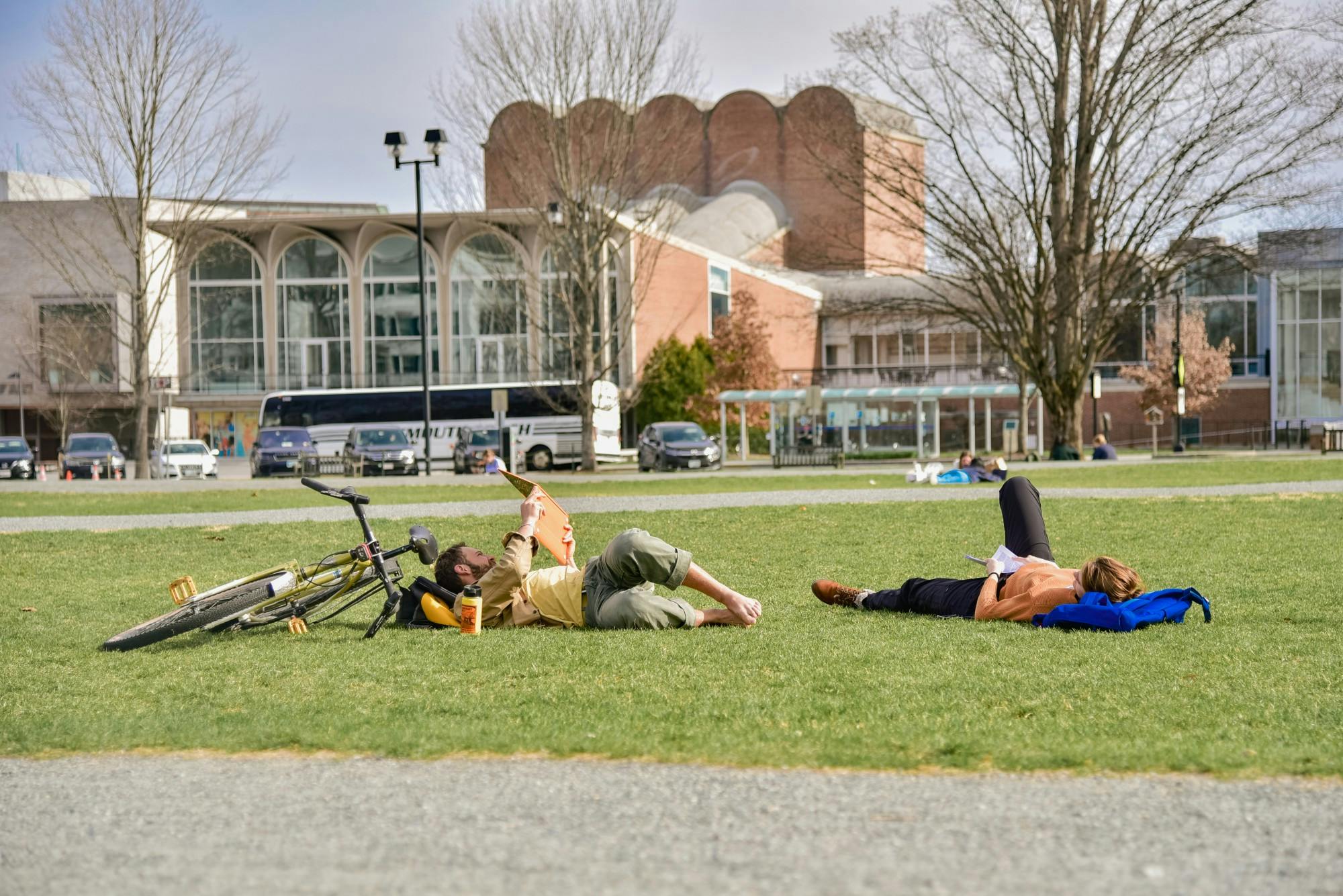As I walk by Dartmouth’s beloved Green, it is not just the early October foliage that is verdant with color, but the people. Somehow, they are enough to bring the brittle fall leaves to life.
Before the Green was a place where students in Chuck Taylors and Air-Force Ones raced to class, it was the wooded terrain of the Appalachian Mountains, inhabited by the Abenaki people. In these hills, the first class of Dartmouth students constructed a makeshift assembly hall with boards and planks of hemlock to celebrate the commencement of 1771. Although Dartmouth’s campus has expanded over the years to match its growing student body, the Green remains the first place to welcome new students upon arrival, and the last to wish them farewell.
I remember my first encounter with the Green, on the day I moved in. Two plane flights, a five-hour drive and a quick trek down Main Street later, I was welcomed by its expanse. As it turns out, I was not alone in my admiration of the space.
“It is pretty visually spectacular,” Alex Joel ’25 said, recalling his first memory of the Green. “It immediately makes you feel the significance of the institution.”
In many ways, the Green’s purpose mirrors that of the college community it serves. It is a place to pass through, a place to gather, a place to have hard conversations and light-hearted ones, too. A place to pass those you had hoped to to avoid and one to look for those with whom you wish to collide.
“The Green is also the center of a lot of campus traditions,” Joel said. “Some of my fondest memories from last year were [on the Green:] the snowball fight or the concert from Fallapalooza.”
In the fall, you can bask in the scent of autumn leaves, exchange awkward greetings with Sun God or find a towering Homecoming bonfire on the Green. By winter, it’s covered with skating rinks, snow sculptures and students throwing snowballs when midnight meets the first snowfall. In the spring, students are eager to cover recently-thawed grass with quilts and laptops after a season inside. Footballs and frisbees return, sweats are traded for shorts and students can be seen picnicking with takeout and lounging in the sun once more.
However, before the Green hosted spikeball, concerts or even Baker Library, it held cows. That’s right. The seven-and-a-half-acre space designated as the Green in 1771 by Johnathan Freedman was once Hanover’s pasture. According to a 1965 Valley News article by Jane W. Doe, students grew angry with this use of the space, and would steal the cows in retaliation. This was known as “cowhunting,” an evening activity where students would take the cows north of town or into the cellar of Dartmouth Hall and barcade the entrances. Some cows were even painted white, rendering them unrecognizable to their owners.
In 1836, however, a fence was built around the Green, and its era as a pasture came to a close. Instead, students began using the area for recreation, thanks to some game-friendly changes in town legislation.
Just a few years prior, in 2814, the town of Hanover had passed a law permitting “any game in which a ball is used on the public common in front of Dartmouth College.” With the space set aside as “a playground for their students,” and a new fence around its perimeter, games quickly became a popular scene on the Green.
One of these games was known as Old Division Football, a violent, soccer-like game that developed in the 1820s. In “A Dartmouth Book of Remembrance,” former chemistry professor Edwin J. Bartlett ’72 once described the game as “glorious for exercise, and [having] enough excitement to make it highly interesting. It gave ample opportunity for competitions in speed, finesse, dodging, endurance, and occasional personal collision.” However, as the 1900s approached, Old Division Football was eventually replaced with tug of wars, picnics and streakings — some of which you can still spot on the Green today.
While traditions and activities may have changed over time, the essence of the Green has remained. Julie McColl-McKenna ’89 shared her appreciation for not only the connections the Green physically creates, but also the connections it symbolizes.
“Its symbolic importance to the heart of the Dartmouth community has stayed the same,” McColl-McKenna said. “It’s a place to gather, and a place to spend quality time with friends. I feel like the Green is also the pulse of campus: You can measure that [pulse] by looking at what’s going on on the Green any given day.”
Whether it’s busy with students running late to class, bikers on their way to lunch or just the quiet crunch of falling leaves, the Green captures Dartmouth’s ambience. To McColl-McKenna, its pathways reflect the students from all over the world “crossing paths with each other at every intersection on the Green.”
“It’s kind of representative of all the connections that we make at Dartmouth, with people from all over. There’s so many important college buildings enveloping the Green from all sides. You get admissions, you get art and drama from the Hop, you’re not too far from science, the iconic Baker Library clock tower and our elegant, timeless, historic Dartmouth Hall. In that sense, just standing there and stopping to think about all you can see kind of represents all that Dartmouth has to offer,” she said.
If there is a single space every student on campus will inevitably share, it is the Green. However, while the Green’s criss-crossing paths may symbolize the Dartmouth we know, this college would not be the institution we love without its people, who have stood on its Green and made this school a place to wander, learn and create. If the Green can be defined by anything, it is by the thousands of differing experiences that have traversed its expanse, coming together to make this place what it is.




